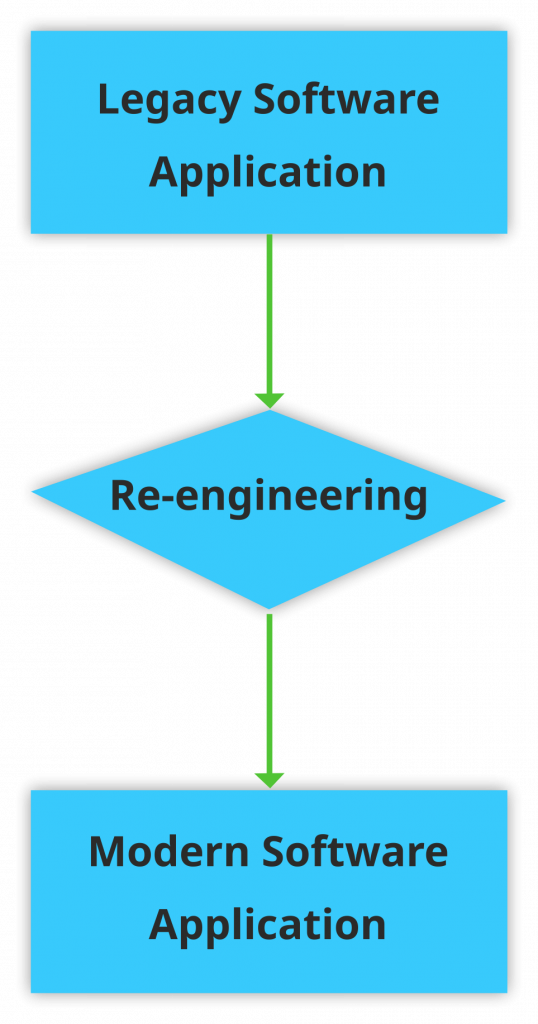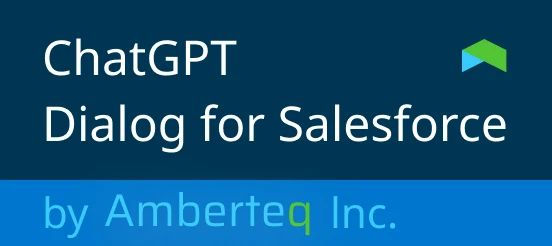Legacy software re-engineering: risks and mitigations
Overview
Legacy software re-engineering presupposes reconstructing the software without altering its basic functionality. In this article, we are going to have a look at the risks that are involved in the process and possible mitigations. This article is intended for businesses that want to learn more about legacy software re-engineering. We will discuss all the factors that should be taken into consideration before the re-engineering of legacy software.
As we know technology is exponentially evolving with time. Every new release of software comes with a package of enhancements, new features, and bug fixes. Businesses that do not keep up with the latest trends or that do not innovate, often lose out to their competitors. The block diagram placed below shows an overview of the legacy software re-engineering process.
Need for Application Re-engineering
Application re-engineering is a software enhancement process that includes keeping the basic functionality of legacy software. Below you can find the points that highlight the need for application re-engineering of legacy software:
- The re-engineering process involves the identification of the factors involved in increasing the maintenance costs of the legacy software. It focuses mainly on making the development process easier and more cost-effective.
- Re-engineering presupposes reviewing the existing code and optimizing it wherever it is required.
- It allows us to add new features as per the latest technology needs.
- Legacy software mostly uses old technologies which are more expensive to maintain, re-engineering with the use of a trending technology can help cut the maintenance cost of the software.
Migration/Modernization Vs.Re-engineering/Porting
Eventually, software vendors have to decide whether they should modernize/migrate their product to the latest version of the same technology stack or port it to some other technology stacks. Unless there is any specific functionality need, software migrating/modernizing using the same technology always has an upper hand. We already have the source code written with the same technology. Also, developers are already versed with that technology. However, for porting the legacy software, one needs to do a thorough analysis of the risks and costs involved in the process. Developers need to have information on the existing software technology as well as the technology to which the software will be ported.
Legacy software porting is time-consuming and prone to risks if we compare it to software migration. However, with proper analysis of risks, system re-engineering can provide a lot of benefits such as substantial improvement in performance, decrease in maintenance cost, up-to-date technology stack, etc.
Issues addressed by Application Re-engineering
Legacy software is associated with many issues:
1. Maintenance Cost
Legacy software products are usually large applications that have been already used by businesses for a long period of time. And it is very expensive to maintain these large applications.
2. User accessibility and Platform Support
Legacy apps are mostly desktop stand-alone applications, however, technological enhancement has enabled these stand-alone products to be re-engineered into web applications that are delivered to users via the internet.
3. Optimization and Performance
Software re-engineering enhances system functionality and optimizes the code and database logic so that processing gets faster.
As we know technology is evolving with time, and the maintainability of legacy software is the biggest challenge faced by organizations. Also, the needs of the end user of the software change. And organizations should take this fact into account when they are planning to re-engineer their products.
Application Migration/Modernization
When you are going to migrate legacy software to an up-to-date technology version, you need to know that there are a few major issues that should be addressed. They are the use of third-party libraries, Unicode support, database access technology, and underlying database compatibility, among others.
Huge legacy software applications involve the use of many third-party libraries. During application migration, the availability of alternative or compatible third-party libraries must also be taken into consideration when estimating the time and cost of the migration process. There might be a possibility that some libraries may not have support and in this case, programmers have to do it themselves.
Migration restricts businesses from adjusting their software systems within certain limits. Thus, there are some constraints that you can face when you are trying to expand existing features and incorporate new ones.
Application Re-Engineering
Application re-engineering is all about studying and analyzing an existing software system and subsequently implementing its improved version in terms of functionality, performance, designs, etc.
Legacy systems are often designed as desktop applications (mostly two-tier apps). The use of internet technology has increased drastically over the past few years and the web has become the most dominant software platform. Companies are quickly looking to adapt to this distributed architecture of the web in order to leverage the functionalities of their legacy systems in web environments. System re-engineering often optimizes and improves performance in comparison to existing systems. It can also help to save costs by referring to existing systems for requirements and design specifications.
Before conducting re-engineering, it is important to understand the peculiarities and specificity of the existing system. We can do this basically by reading the available documentation and help files, operating the system, and playing around with its various modules and functions.
The process of re-engineering mostly involves two approaches i.e. forward engineering and reverse engineering. Reusing existing components drastically reduces cost and development time. Also, it can ensure a higher level of reliability. To know whether a component is necessary for the target system, one needs to understand the role of the component first. Hence this calls for a need of a reverse engineering process.
Program decomposition strategies
Software re-engineering also includes the analysis of old enterprise legacy software systems which are usually large and complex. This explains the need for the decomposition of software systems. Organizations make use of various decomposition strategies like System module call graphs, Module Dependency diagrams, etc. To decompose a system it is required to identify various program components. This helps to assess the risk associated with the application re-engineering. These components can broadly be classified as user interface components, database components, and business logic components. User interface components can be incorporated into the client side of the target system. Database components can be incorporated into the server side and business logic components can be moved either to the client or server side based on the target system needs.
Risks and Mitigations
Legacy software re-engineering/porting to a new technology stack requires a thorough study of the target technology, availability of equivalent third-party libraries, controls, etc. User experience and interface improvements require interactions and inputs/feedback from the end users.
Sometimes re-engineering can be as easy as using some parsers and converters to transform the software system into some other technology. Sometimes it can become as complex as a complete rewrite of the existing system. Many organizations have bitter experiences with this due to a lack of initial risk and cost estimations.
Customer acceptance
People are always resistant to any new change until they get used to it. Sometimes the outcome software system may not be very user-friendly in terms of UI & UX. There are various interactive activities available to gather inputs from end customers. By incorporating users’ feedback and involving them in the process, you can make an easy behavioral shift toward accepting the change
Performance
The target tech stack should be thoroughly analyzed from a performance perspective. It should not happen so that the new system’s performance will be diminished in comparison to the original one. Various parameters involved that affect performance should be attentively studied.
Cost and Maintenance
It is difficult to predict the exact cost of re-engineering when we need to incorporate new functionality along with porting existing features to new environments. Businesses should benefit from the investment in system re-engineering. Also, the newly ported system should not turn out to be a high-maintenance system.
Conclusion
Many businesses have software products that are out of date and expensive to maintain. Software re-engineering is an excellent option to replace such legacy software. However, before the re-engineering, it is necessary to conduct a detailed study of all the risks and possible mitigations. Re-engineering will help organizations to evolve their software to ensure better performance and easy maintenance. Software re-engineering helps in improving the software, making it more efficient, effective, stable, and maintainable.



